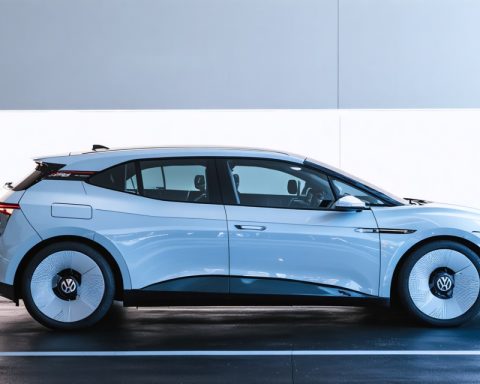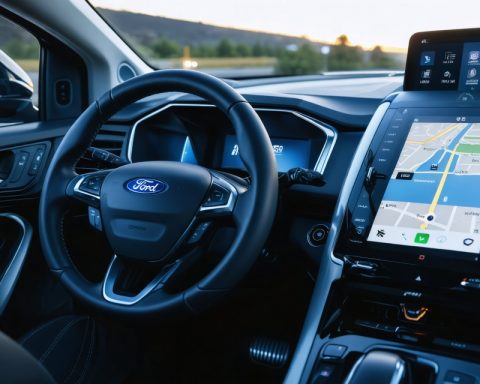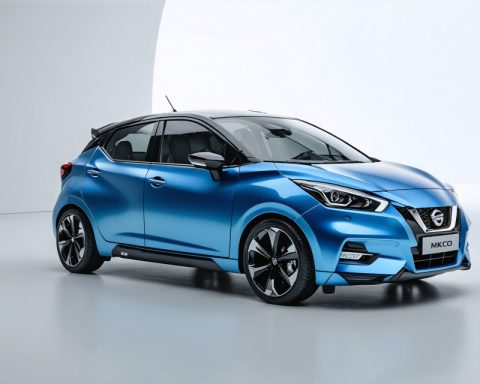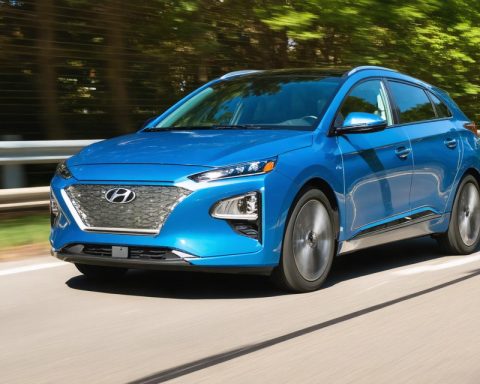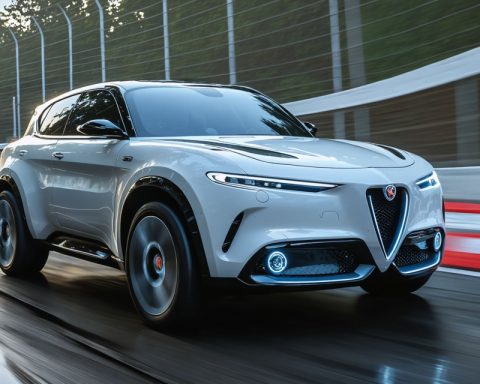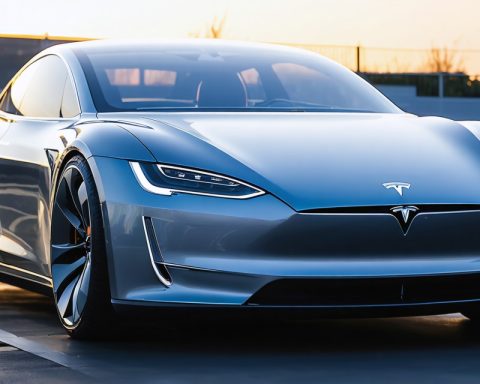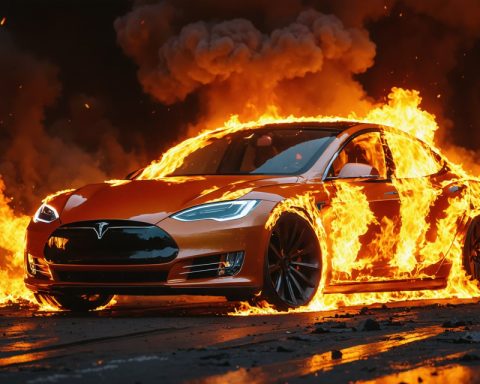- The Volkswagen ID.4 is rapidly gaining popularity in Europe, outselling the Tesla Model Y with 7,177 units in January 2025.
- Volkswagen’s competitive pricing, with the ID.4 priced under $40,000, is a key factor in its success against Tesla.
- Electric vehicle (EV) sales are rising globally, reaching over 17 million units in 2024.
- Despite reduced subsidies in Europe, the demand for EVs remains strong, driven by environmental concerns and policy incentives.
- While EVs have a lower overall carbon footprint, challenges persist with lithium mining for batteries.
- Government policies can significantly influence the shift to greener transportation.
- The success of the ID.4 suggests a new era in the automotive industry, emphasizing sustainability and affordability.
- Consumers are encouraged to join the eco-conscious movement with guides to find suitable EV options.
A quiet revolution is unfolding on the bustling streets of Europe, where the hum of internal combustion is increasingly drowned out by the silent, sleek advance of electric vehicles. At the forefront of this transformation is the Volkswagen ID.4, an electric SUV that’s not just taking the European market by storm—it’s dethroning giants. With an impressive surge in popularity, the ID.4 is leading the charge against climate change and establishing itself as a formidable competitor to the Tesla Model Y.
In January 2025, JATO Dynamics reported that the Volkswagen ID.4 outpaced the Tesla Model Y in sales, delivering 7,177 units compared to Tesla’s 6,115. This remarkable feat signals a nearly 200% jump from its sales figures a year prior. In stark contrast, the Tesla Model Y saw a substantial dip, with sales plummeting by almost 50%. What could explain this dramatic shift? Price plays a crucial role. Priced at just under $40,000, the ID.4 offers a more enticing deal by at least $3,000 than its Tesla counterpart.
Beyond competitive pricing, this trend reflects a broader movement toward sustainable living, as consumers opt for greener alternatives amidst the harrowing effects of climate change. Electric vehicle sales have skyrocketed globally, with over 17 million units sold in 2024 alone. In North America, EV sales climbed nearly 9%, bolstered by attractive consumer incentives and stricter emissions mandates. Meanwhile, despite a 3% decline in the European market—primarily due to the withdrawal of significant subsidies in Germany—the tide of electric vehicle adoption shows little sign of retreating.
However, the story of electric vehicles isn’t without its complexities. While EVs inherently produce less pollution compared to traditional vehicles, the environmental cost of lithium mining for batteries remains a challenge. Yet, the overall carbon footprint of EVs continues to be substantially lower than that of fossil-fuel-driven cars.
This evolving landscape underscores a pivotal message: when governments wield policy tools wisely, they can accelerate the transition to greener transport. As we stand at this critical juncture, the Volkswagen ID.4’s triumph over the Tesla Model Y may well be the harbinger of a new automotive era—one where affordability, sustainability, and consumer preference converge.
Aspiring to add your name to the growing list of eco-conscious drivers? A simple guide can help steer you toward your ideal electric vehicle, aligning personal convenience with environmental responsibility. Together, these steps lead not only to a cleaner commute but a brighter future for all.
The Rise of Electric Vehicles: How the Volkswagen ID.4 is Changing the Game
Understanding the Electric Vehicle Boom
The remarkable rise of the Volkswagen ID.4 in Europe’s bustling automotive market represents a significant shift in consumer preferences and technological advancements. This article will explore additional dimensions of this transition, including industry trends, market forecasts, and practical insights for prospective buyers.
Real-World Use Cases and Market Trends
1. Price Competitiveness and Consumer Preferences:
– The ID.4’s competitive pricing under $40,000 makes it an attractive choice for many consumers. Economic incentives and lower long-term maintenance costs of EVs further enhance their appeal.
2. Expanding Infrastructure:
– The development of extensive charging networks is crucial. European countries are making headway, improving public charging stations to meet growing demand.
3. Environmental Responsibility:
– Beyond emissions reductions, initiatives are underway to address the environmental impact of battery production through recycling and new technologies.
How-To Choose the Right Electric Vehicle
1. Assess Your Driving Needs:
– Consider daily travel distance, cargo space, and charging availability to match personal needs with vehicle features—a critical factor when selecting an EV like the Volkswagen ID.4.
2. Evaluate Long-term Costs:
– Factor in savings from fuel, maintenance, and potential government subsidies, which can vary based on location. Research current incentives at local and national levels.
3. Plan for Charging:
– Home chargers can be a significant convenience; however, ensure compatibility with your home’s electrical system. Investigate local public charging options as a backup.
Industry Forecasts and Predictions
1. Continued Growth:
– Electric vehicle sales are projected to maintain an upward trajectory. Analysts from McKinsey forecast that global EV sales could surpass 25 million units by 2028 as technology advances and prices continue to fall.
2. Policy and Legislation Dynamics:
– Government interventions will likely tighten emissions standards and incentivize cleaner technologies, driving further adoption of EVs and transforming the automotive industry.
Security and Sustainability Concerns
1. Battery Technology and Sustainability:
– While lithium mining poses questions, companies are exploring sustainable mining practices and next-gen battery technologies, like solid-state and sodium-ion, to reduce environmental impacts.
2. Cybersecurity Challenges:
– As automobiles become more digital, EVs face cybersecurity vulnerabilities. Manufacturers focus on robust security protocols to protect vehicles from potential threats.
Conclusion and Recommendations
For those beginning their journey towards sustainable transport, the Volkswagen ID.4 illustrates a compelling option—a blend of affordability, performance, and environmental benefit.
Actionable Quick Tips:
– Compare Models: Use online resources to compare available EVs and their features relative to your needs.
– Financial Planning: Leverage any available incentives to offset costs and compute total ownership costs over the vehicle’s lifespan.
– Stay Informed: Follow evolving technologies such as battery developments and new energy policies for potential savings and enhancements in the future.
For more information on electric vehicles and emerging automotive trends, visit the Volkswagen website or other authoritative industry sources.
—
In embracing the electric vehicle revolution, the Volkswagen ID.4 not only marks a milestone for automotive innovation but also encourages consumers to actively participate in shaping a sustainable future.


